Beijing, also known as Peking, is the capital of China and one of the most populous cities in the world. It is the country’s political, educational, and cultural center, housing the headquarters of most of China’s largest state-owned companies. It is a significant hub for the national highway, expressway, railway, and high-speed rail networks.

Beijing is renowned for its opulent palaces, temples, parks, gardens, tombs, walls, and gates, and its art treasures and universities have made it a center of culture and art in China. The city is well-known for its numerous landmarks.
Where is Beijing?
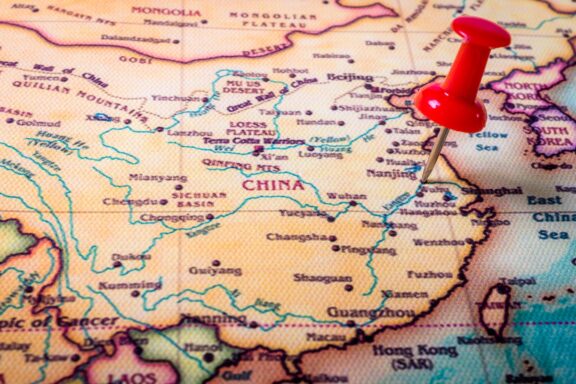
Beijing is located in the northeastern part of the People’s Republic of China, near the coastal region that borders the Bohai Sea. This location puts it at the northern tip of the North China Plain, which the Yan Mountains bound to the north and the Taihang Mountains to the west.
The city is mainly flat, made up of fertile plains, but the geography becomes more mountainous on the outskirts with the Western Hills, known for their scenic beauty.
History of Beijing
Beijing’s history stretches back over three millennia and has served as the capital of multiple dynasties, playing a significant role in the cultural, political, and social development of China.
Signs of human life in Beijing trace back to prehistoric periods. The Peking Man site in Zhoukoudian, which provided evidence of a hominid species inhabiting the area around 750,000 years ago, was a significant archaeological find.
In recorded history, Beijing first rose to prominence as Ji, a city-state during the Western Zhou period (1045 BC to 771 BC). The city gained further importance when it became the capital of the State of Yan under the name Yanjing, one of the central states during the Warring States period (475-221 BC).
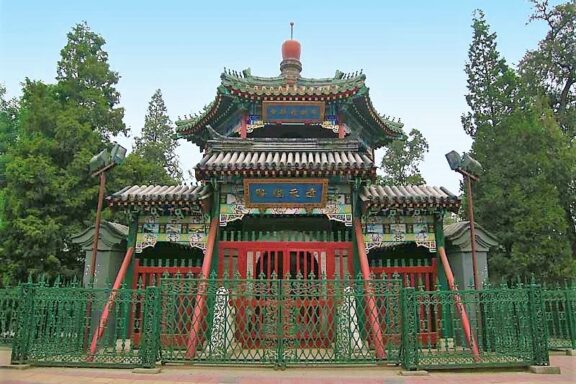
In 1271, Beijing was chosen as the capital of the Yuan Dynasty by Kublai Khan and was known as Dadu or “Great Capital.” The city was laid out in a grid pattern that remains today in the layout of Beijing’s streets.
After the fall of the Yuan, the Ming Dynasty moved the capital to Nanjing in 1368, but it was pushed back to Beijing in 1421 by the Yongle Emperor, and the Forbidden City was completed in 1420. Since then, Beijing has been China’s capital for most of the last six centuries, with some interruptions.
The city remained the capital during the Qing Dynasty (1644-1912), and it witnessed significant events, including the Boxer Rebellion in 1900.
In the 20th century, despite tumultuous events, including the fall of the Qing Dynasty, the Japanese occupation during World War II, and the Chinese Civil War, Beijing retained its status as the national capital.
In 1949, the People’s Republic of China was founded by the Chinese Communist Party, with Beijing as its capital. The city underwent large-scale modernization projects under the communist regime, transforming into a central hub for commerce and industry.
Beijing was the site of the infamous Tiananmen Square protests in 1989, an event that marked a significant moment in the city’s modern history. It also hosted the 2008 Summer Olympics and the 2022 Winter Olympics, cementing its position on the global stage.
Throughout its history, Beijing has preserved its historical and cultural sites, such as the Great Wall, the Forbidden City, the Temple of Heaven, and the Summer Palace, which stand as testaments to its rich historical legacy.
Features of Beijing
Beijing is a city of contrasts where the old meets the new. It is a bustling metropolis known for its cultural richness, historical sites, modern architecture, and innovative technology.
Geography and Climate
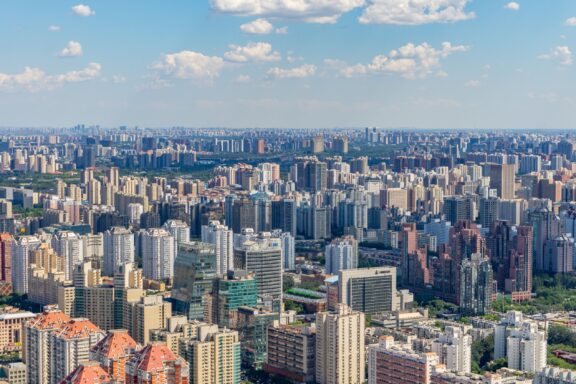
Beijin’s location is characterized by flat land in plains, with a more mountainous terrain as you move towards the outskirts, especially with the Western Hills to the west. Beijing is almost surrounded by Hebei Province, apart from Tianjin Municipality to its southeast.
The climate in Beijing is classified as a humid continental climate, marked by significant temperature differences between the seasons. Summers are hot and humid, with the highest temperatures in July and August. Winters are cold and dry, often with strong winds from Siberia. Spring and autumn are generally short transitional periods. The city also experiences a monsoon season from June to August.
Population
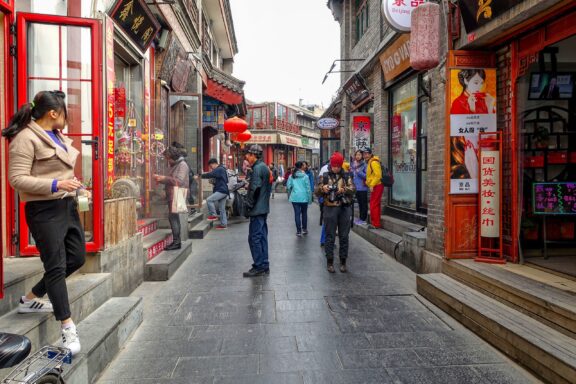
The population of Beijing is over 18.5 million, making it one of the most populated cities in the world. The city is predominantly Han Chinese, but as a global city, it is home to diverse ethnicities and nationalities.
Beijing is also a major education center, with many universities and research institutions. This contributes to a highly educated population and a significant student community.
Economy
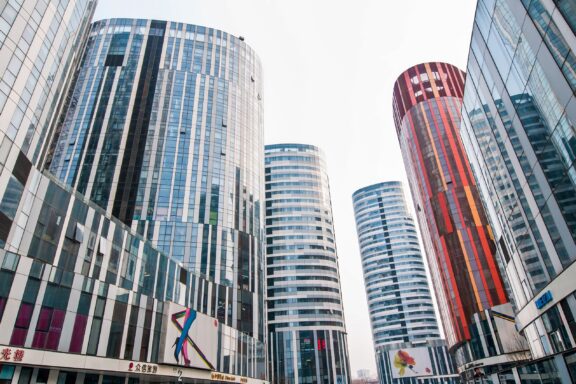
Beijing is one of the critical pillars of the Chinese economy. It is part of the most developed region in the country, known as the Jing-Jin-Ji Metropolitan Region, which includes Beijing, Tianjin, and Hebei. The city is a national hub for finance, technology, and innovation, housing the headquarters of numerous multinational corporations and Chinese tech giants like Baidu and Lenovo.
Critical sectors in Beijing’s economy include information technology, telecommunications, electronics, automobile manufacturing, and pharmaceuticals. The city is also a significant center for tourism, thanks to its rich historical and cultural heritage.
Beijing’s economic health is robust, with consistent growth and development. The city’s per capita GDP is among the highest in China, indicating a high standard of living for many of its residents. The city has also invested heavily in infrastructure development, further boosting its economic growth and connectivity.
Things to Do and Places to See in Beijing
1. Visit the Great Wall of China
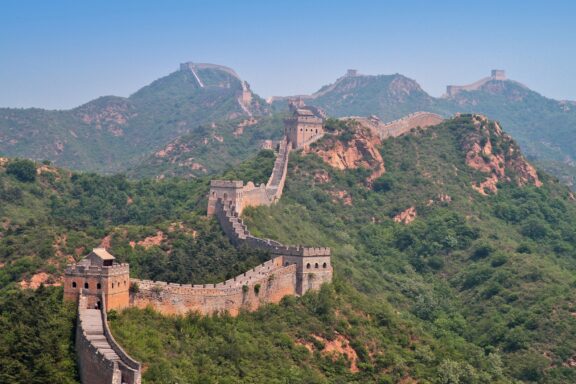
A UNESCO World Heritage Site and one of the Seven Wonders of the World, the Great Wall stretches thousands of miles. Near Beijing, sections like Badaling and Mutianyu offer accessible day trips to experience the breathtaking views from this ancient structure.
Despite its historical and cultural importance, the Great Wall is an endangered site. Many sections are in disrepair due to natural erosion and human damage. Efforts are being made for its preservation.
2. Explore the Forbidden City
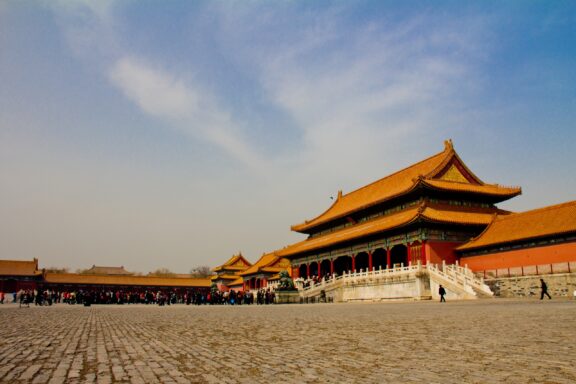
Once an imperial palace, the Forbidden City is now a museum that houses artifacts of Chinese history. Its architecture is a testament to traditional Chinese palatial architecture with its iconic yellow-tiled roofs, red walls, and intricate decorations.
The Forbidden City served as the home of emperors and their households and was the ceremonial and political center of the Chinese government for almost 500 years. It was used by 24 emperors from the Ming dynasty (1368-1644) to the end of the Qing dynasty (1644-1912).
3. Wander in the Summer Palace
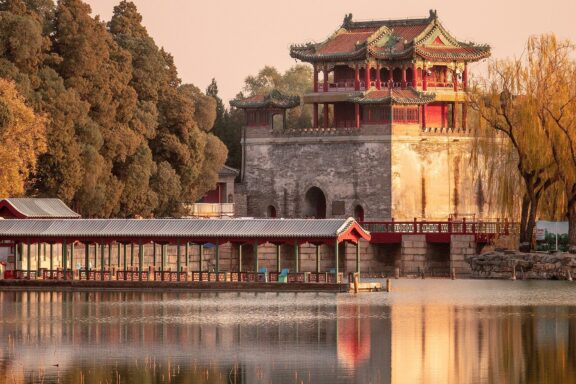
An expansive park dotted with temples, gardens, pavilions, and lakes, the Summer Palace was the royal family’s retreat during the hot summer months. Its beautiful landscapes and the grandeur of its buildings reflect Chinese philosophy and design.
The origins of the Summer Palace date back to the Jin Dynasty, but its construction as an imperial garden started in 1750 during the Qing Dynasty. It was once destroyed during the Opium War in 1860 and then rebuilt by Empress Dowager Cixi for her own pleasure.
4. Experience Peking Opera
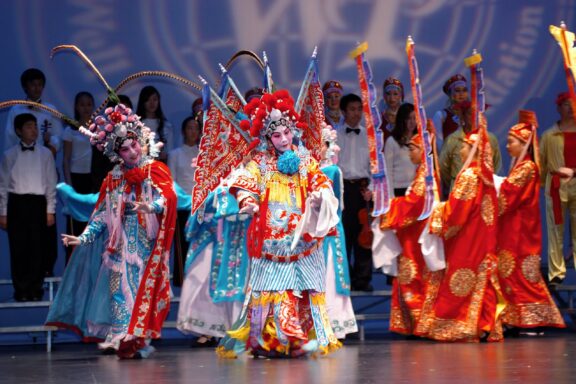
The Peking Opera is a traditional Chinese theatre art form that combines music, vocal performance, dance, and acrobatics. A Peking Opera performance is a rich, visually stunning experience encapsulating centuries of Chinese cultural tradition.
Peking Opera was born when the ‘Four Great Anhui Troupes’ brought Anhui opera, or what is now called Huiju, in 1790 to Beijing, for the eightieth birthday of the Qianlong Emperor.
5. Stroll in the Hutongs
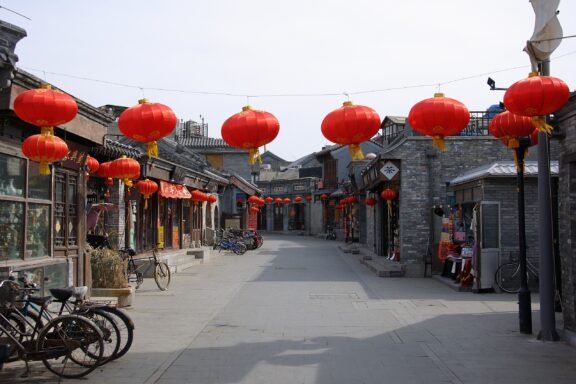
These narrow alleyways offer a glimpse into Beijing’s old city’s traditional residential and social structures. Walking through the maze-like hutongs is like stepping back in time to the city’s storied history.
They date back to the Yuan Dynasty (1271–1368), but most of the remaining Hutongs mainly stem from the Ming (1368–1644) and Qing (1644–1911) Dynasties.
6. Visit the Temple of Heaven
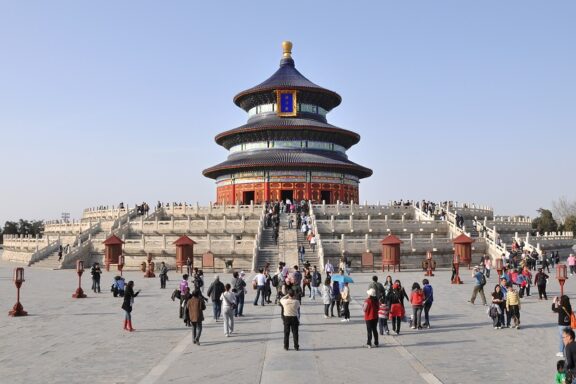
The Temple of Heaven is an imperial complex of religious buildings in southeastern Beijing. The site is renowned for its unique architectural features and symbolic layout representing the relationship between heaven and earth, used by the emperors for prayer ceremonies for a good harvest.
7. Discover 798 Art District
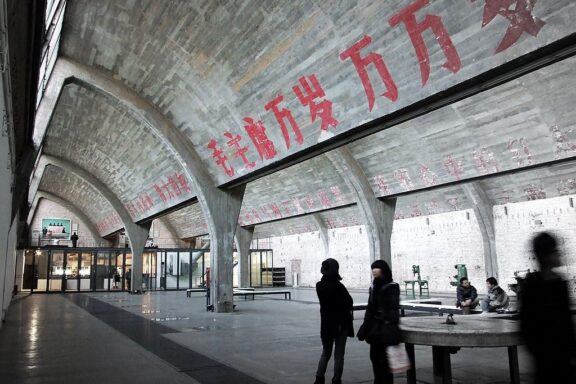
Once an industrial site, the 798 Art District is now a cultural hub filled with contemporary art galleries, artist studios, design companies, and trendy cafes. The area retains many of its original factory features, creating a unique blend of the past and the present.
8. Explore the National Museum of China
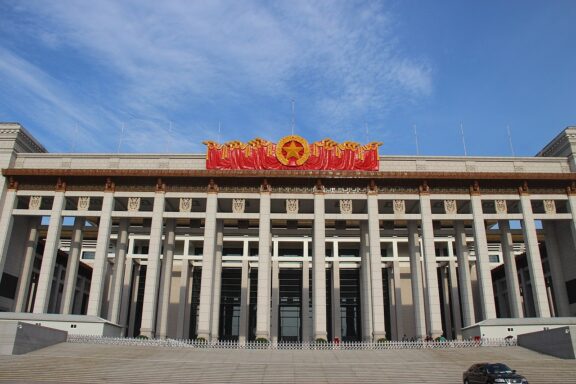
The National Museum of China is one of the largest museums in the world, with a total construction area of nearly 200,000 square meters. It combines collections from two separate museums, the Museum of the Chinese Revolution and the National Museum of Chinese History.
The museum houses over a million artifacts, showcasing over 5,000 years of China’s historical and cultural heritage. Highlights include ancient ceramics, jade, bronze ware, calligraphy, and paintings.
9. Enjoy Tiananmen Square
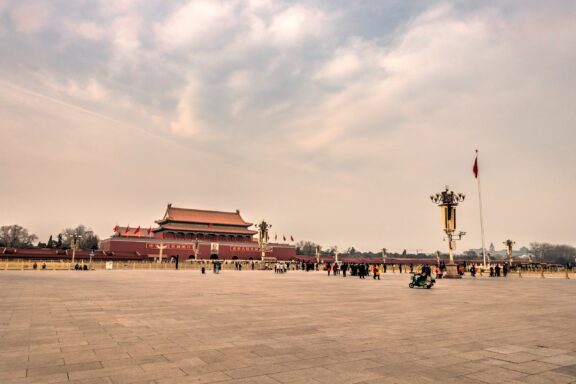
As one of the largest public squares in the world, Tiananmen Square is a site of historical significance for China. It’s a place filled with history and symbolism, surrounded by essential areas such as the Great Hall of the People, the National Museum of China, and the Mausoleum of Mao Zedong.
Tiananmen Square is remembered for the pro-democracy protests of 1989, which ended on June 4th with a military crackdown. The event, often referred to as the Tiananmen Square Massacre, remains a sensitive and heavily censored topic in China.
10. Take a Walk in Beihai Park
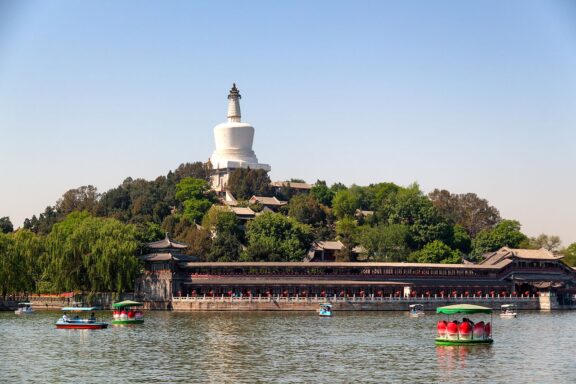
An ancient imperial garden northwest of the Forbidden City, Beihai Park offers lush landscapes, tranquil lake views, and historic temples. It’s known for the white pagoda on an island in the lake, providing a peaceful oasis in the bustling city.
The park is home to one of the three famous Nine-Dragon Screens in China. This glazed tile screen features nine different dragons playing with pearls against a backdrop of clouds and sea waves.
The central Beihai (North Sea) Lake served as a model for many famous classical gardens in southern China. For example, the garden designer of the Suzhou Gardens first visited Beihai Park before building the gardens in Suzhou.
11. National Centre for the Performing Arts
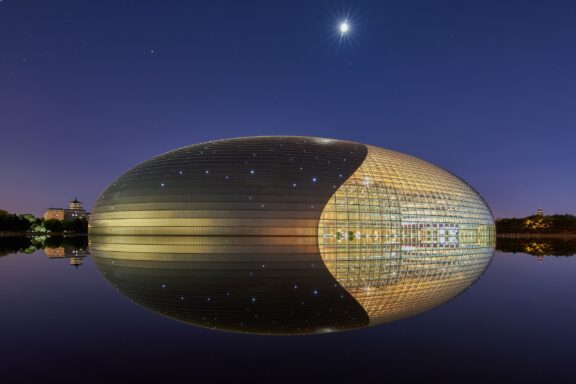
The National Centre for the Performing Arts (NCPA), also known as “The Giant Egg” due to its distinctive dome shape, is a must-visit spot in Beijing, especially if you’re a fan of the arts. It’s one of the most important cultural landmarks in China and a symbol of its growing influence in the global arts scene.
This impressive structure, designed by French architect Paul Andreu, is surrounded by a man-made lake and appears to float on water, creating a mesmerizing image. The titanium-accented glass dome is not only an architectural wonder, but it’s also designed for acoustics and reflects the sky, giving it a magical appeal.
12. Take a Boat Ride on Qianhai Lake
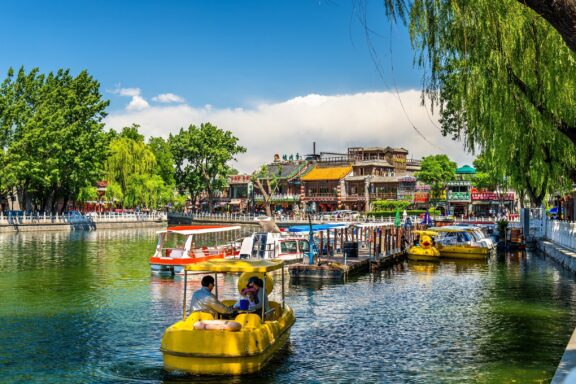
Taking a boat ride on Qianhai Lake is a delightful experience and a great way to enjoy a different perspective of Beijing. Qianhai Lake is part of Shichahai, an area in Beijing known for its historic hutongs, old courtyard houses, and beautiful lakes.
In the daytime, you can enjoy the tranquility of the lake, admiring the willow-lined shores, historical buildings, and traditional Chinese-style boats. The area is also rich in history, having served as a royal waterway in the Yuan dynasty and later becoming a commercial district with many famous shops and restaurants.
If you choose an evening boat ride, you will see the lake come alive with the lights of nearby bars, restaurants, and teahouses reflecting on the water. The vibrant nightlife scene around the lake adds a different charm to the experience.
13. Visit Jingshan Park
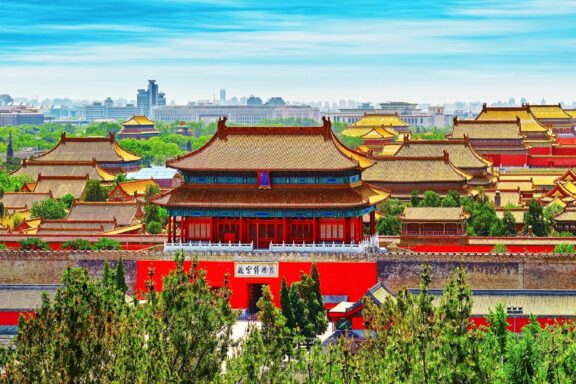
Jingshan Park, or “Prospect Hill,” is a beautiful and historically significant park located in the heart of Beijing, just north of the Forbidden City. This imperial garden was transformed into a public park in 1928 and has since been a favorite destination for locals and tourists.
The park is renowned for its artificial hill, Jingshan, made from the soil excavated to build the moat of the Forbidden City. Standing at the top of this hill, you’ll be treated to a stunning panoramic view of the Forbidden City to the south and the rest of Beijing in all other directions. It’s especially magnificent at sunset.
In addition to the spectacular views, Jingshan Park boasts beautiful pavilions, landscaped gardens, and historic sites like the Five Phoenix Pavilion, which was relocated from the Old Summer Palace. There’s also the Wanchun Pavilion, considered the best place in Beijing for a bird’s-eye view of the city.
Frequently Asked Questions
What is the best time to visit Beijing?
Spring (April to June) and autumn (September to October) are the best times to visit Beijing because of the pleasant weather. These seasons offer comfortable temperatures and are great for outdoor sightseeing.
How can I get around in Beijing?
Beijing has an extensive public transportation network, including subways, buses, and taxis. The city’s subway system is comprehensive and user-friendly, making it a preferred choice for many tourists. Additionally, bike-sharing services are available.
Is English spoken in Beijing?
While Mandarin is the primary language in Beijing, English is commonly taught in schools and is used in many hotels, tourist sites, and restaurants that cater to tourists. However, not everyone in Beijing can speak English, so having a translation app can be helpful.
What currency is used in Beijing?
The official currency is the Chinese Yuan (Renminbi). Credit cards are widely accepted in hotels, restaurants, and stores, but carrying some cash for smaller shops or street vendors is advisable.
Do I need a visa to visit Beijing?
Most foreign visitors need a visa to enter China, although there are exemptions for transit passengers in some instances. Before planning your trip, it’s best to check the current visa requirements with the Chinese embassy or consulate in your home country.
What local delicacies should I try in Beijing?
Beijing is famous for Peking Duck, a must-try dish. Other local delicacies include:
• Zhajiangmian, also known as “noodles with soybean paste,” consists of thick wheat noodles topped with a hearty sauce made from stir-fried ground pork (or sometimes beef) and fermented soybean paste.
• Dumplings known as “jiaozi” in Mandarin are made by wrapping a thinly rolled piece of dough around a filling that typically includes minced pork, beef, chicken, shrimp, tofu, or vegetables.
• Local street foods offer a vibrant part of Beijing’s culinary scene, providing an excellent opportunity to taste various local snacks.
What cultural customs should I be aware of when visiting Beijing?
Chinese customs value politeness and harmony. It’s important to respect elders and avoid controversial topics in conversation. When visiting religious sites or temples, dress modestly and follow the local rules. It’s also customary to receive items with both hands as a sign of respect.
Is it safe to travel to Beijing?
Generally, Beijing is considered a safe city for tourists, with low crime rates. However, like anywhere, you must be aware of your surroundings and exceptionally crowded areas and keep your personal belongings secure.
What are some tips for bargaining in Beijing’s markets?
Bargaining is common in many markets in Beijing. Start by offering about half or less of the initial price and negotiate. However, be respectful during the process, and remember that not all places accept bargaining, especially larger stores, and malls.
How can I respect the local culture and environment during my visit?
Respecting local customs and traditions is essential. Avoid loud and disruptive behavior, especially in religious or historic sites. When exploring natural areas, stay on designated paths to protect the environment. Always dispose of your waste correctly or take it with you.
Final Thoughts
Beijing stands as a remarkable testament to China’s rich historical past and dynamic present. As the nation’s capital, it offers a blend of centuries-old traditions and rapidly evolving modernity that is uniquely its own. From the majestic Great Wall and the ancient Forbidden City to its bustling hutongs and vibrant contemporary art scene, Beijing is a city of contrasts that continually fascinates.
Its diverse culinary landscape offers a gastronomic adventure to satisfy any palate. Combined with the warm hospitality of its people, Beijing is undoubtedly a destination well worth visiting. Regardless of your interests – history, culture, cuisine, or simply exploring new places – Beijing has something to offer everyone.
Image Sources and Copyright Information
- Map Pinpointing Beijing in China: © amajsen/Shutterstock
- Niujie Mosque in Beijing: © Smartneddy/WIkimedia | CC BY-SA 2.5 Generic
- Beijing Cityscape Panorama: © Tobias Steinert/Shutterstock
- Locals Commuting in a Hutong Street in Beijing: © ako photography/Shutterstock
- Modern Skyscrapers in Chaoyang District, Beijing: © Fotokon/Shutterstock
- Scenic View of the Great Wall of China Winding Through Mountainous Landscape: © Zbynek Jirousek/Shutterstock
- Forbidden City in Beijing with Tourists: © Pcala/Shutterstock
- Sunset at the Summer Palace in Beijing: © Peter K Burian/Wikimedia | CC BY 4.0 International
- Peking Opera Performance: © Harry Hu/Shutterstock
- Traditional Hutong Street with Red Lanterns in Beijing: © Ola Lundqvist/Shutterstock
- Tourists Visiting the Temple of Heaven in Beijing: © Fong Chen/Wikimedia | Public Domain Mark 1.0
- Silhouettes of People in Urban Art District: © Charlie fong/Wikimedia | Public Domain Mark 1.0
- Exterior View of the National Museum of China: © Gary Todd/Wikimedia | CC0 1.0 Universal
- Tiananmen Square under a cloudy sky: © mehdi33300/Shutterstock
- Beihai Park with White Pagoda and Boats on Lake: © Czzhermit/Wikimedia | CC BY-SA 4.0 International
- National Centre for the Performing Arts at Night with Reflection: © Mirko Kuzmanovic/Shutterstock
- Sunny Day at Qianhai Lake, Beijing with Pedal Boats: © Leonid Andronov/Shutterstock
- Aerial View of Jingshan Park: © V_E/Shutterstock